- Home
- Neil Gaiman
Neil Gaiman Young Readers' Collection Page 39
Neil Gaiman Young Readers' Collection Read online
Page 39
He was arranging pebbles and stones and string on the top of the Time Machine box. “Final coordinates entered,” he said. “And then it’s off to your house for breakfast.”
“Does that mean that there is a Stegosaurus in a hot air balloon outside?” I asked my dad.
“There is not,” he said. “For reasons that will become apparent.”
“I think that there should have been some nice wumpires,” said my sister, wistfully. “Nice, handsome, misunderstood wumpires.”
“There were not,” said my father.
“Would you like to press the button?” said Professor Steg.
I pressed the red button. There was an ear-popping noise and a flicker of years and I was floating, in a balloon basket, above the intersection of Marshall Road and Fletcher Lane. I could see our house from above. I could see the bicycles in the back garden. I could see the rabbit hutch.
“We’re here!” I said, and I patted Professor Steg on the back ridge-plates.
“It was very nice, having you as a traveling compani—aargh,” said the professor, because there was a familiar sort of a thumm-thumm noise, and before I had a chance to press the red button, we were deposited, balloon and all, on the enormous metal deck of a flying saucer, with a number of very grumpy-looking green globby people staring at us with too many eyes. They did not look pleased.
“HaHA!” said several globby people at the same time. “You thought you had escaped us! And you were wrong! Now, you must sign the planet over to us so that we can remodel it. We will take out all the trees, for a start, and put in plastic flamingoes.”
“Why?”
“We like plastic flamingoes. We think they are the highest and finest art form that Earth has achieved. And they are tidier than trees.”
“Also, we are going to replace the clouds with scented candles.”
“We like scented candles, too,” explained a huge green globby person, who looked like he was mostly made of snot.
“We also like decorative plates!” said another. “We will put a decorative plate up where the moon is now.”
“A really BIG decorative plate, showing landmarks of the world.”
“And we will then replace all of the landmarks of the world with decorative plates with pictures of landmarks on them too, so the Eiffel Tower will be replaced by a large plate with a picture of the Eiffel Tower on it. And Australia will be replaced by a really seriously big plate with Australia on it.”
“Also we will replace all of your mountains with throw-cushions,” said the smallest, globbiest thing of all, with triumph in its glutinous voice.
“We have learned a lot from our previous meeting,” said some globs that were sticking to a wall. “If you look over there, you will see that the door to the space-time continuum you used to escape through last time is now securely locked.”
It was definitely locked. It had a huge padlock on it, and a sign saying
KEEP OUT
on it, in unfriendly red letters. There were also chains around it, a tape that said
DO NOT CROSS,
and a handwritten notice that said
For Your Convenience,
Please Use Another Door.
ESCAPE WAS IMPOSSIBLE.
“Also we have depowered your Time Machine.”
I looked at the professor. His armored back-flaps were drooping, and his tail was—well, not actually between his legs, because stegosauruses aren’t made that way, but if they were, it would have been.
“We have been tracking your movements through time and space,” said a large globby alien in front of a console with a screen on it.
“Now, see what happens when I press this grundledorfer,” said a particularly drippy alien. It was half-sticking to the wall, next to a large black, shiny button.
“It’s called a button,” I said.
“Nonsense. We named it after our brood-aunt, Nessie Grundledorfer,” said the globby aliens. The particularly drippy alien pressed the black button on the metal wall with something that might have been a finger and might just have been a long strand of snot.
There was a CRACKLE.
There was a FIZZ.
Standing around us, in attitudes of anger and irritation, were several pirates, some of the black-haired people from the jungle, a very unhappy-looking volcano god, a large bowl filled with piranhas, and some wumpires.
“I’m not sure that I understand what the piranhas are doing,” said my sister.
“They were from a narrow escape earlier that I forgot to mention,” said our father. “Fortunately, the milk floated at a crucial moment and it all ended for the best.”
“I thought it might,” I said.
“Uh-oh,” I said.
“Prepare to be keelhauled, you scurvy dogs,” shouted the pirates.
“Let us now sacrifice them both to great Splod!” shouted the men with shiny black hair.
“They stole my eye! Twice!” rumbled mighty Splod.
“Ve vants those willains and warmints wiolently vound up,” proclaimed a tall lady wumpire with long fingernails.
The piranhas said nothing, but they thrashed about in their bowl, ominously.
“Doomed,” moaned Professor Steg. “We cannot escape. They have frozen us in time and depowered us. Even my mighty Time Machine can do no more than open a small window in time and space—smaller than either of us could get through.”
“But can you do it?” I asked. “Open a little window in time to our last location?”
“Of course. But what good would that do?”
“Quickly!” I said. “Do it!”
Professor Steg pushed the button on the box with the tip of his nose.
There was a zum! and a plip! and a window opened in space and time, large enough for an arm to get through.
I reached into it.
“I’ll explain later,” I said. “Fate of the world at stake.” I grabbed the milk from me, fifteen minutes earlier, through the tiny space-time portal.
“You must like milk a lot,” said the globby aliens. “But that craving for lactic liquids will not make us take pity on you or let you go and spare your badly-designed planet.”
“It should,” I said. “What am I holding in my left hand?”
“Er. The milk,” they said.
“And what am I holding in my right hand?”
They paused. Then one alien, so green and small and so globby and crusted that he might have been an enormous snot-bubble blown by an elephant with a terrible head-cold, said, “. . . the same milk from fifteen minutes earlier.”
“Exactly,” I said. “Now. Think about this one very carefully. What would happen if I touched these two things together?”
The globby aliens went a very pale green. The pirates, shiny-black-hair-men, and the piranhas looked at them, puzzled, seeking some kind of explanation, as did the wumpires.
“If two things that are the same thing touch,” proclaimed the volcano god, “then the whole Universe shall end. Thus sayeth the great and unutterable Splod.”
“How does a volcano know so much about transtemporal meta-science?” asked one of the pale green aliens.
“Being a geological formation gives you a lot of time to think,” said Splod. “Also, I subscribe to a number of learned journals.”
I coughed, in what I hoped was an ominous sort of way. “Well?” I asked.
“What he said,” admitted the green globby aliens. “The bit about the Universe ending.”
“So,” I told them. “Unless you wish to spend the rest of your lives in a universe that no longer exists, you had better return things to the way they were. And then go away.”
The aliens looked at each other. They grinned at each other.
One of them pressed the grundledorfer.
The wumpires, pirates, piranhas, volcano god, and the worshippers of the volcano god were gone.
“What if,” suggested one of the green globby aliens hopefully, “we only redecorated the Southern Hemisphere
?”
“Not a chance,” I said. “Now, release us, or the milk touches itself! And then go away. Leave this planet forever.”
The aliens looked at me, then they looked at each other, and then they sighed, with a noise like a hundred elephantine snot balloons all deflating at once.
“Right,” they said.
It was at that moment that a voice louder than anything I have ever heard—and I had heard a volcano erupt at very close range—said,
“GALACTIC POLICE.
DO NOT MOVE.”
My hands shook, but the milk did not touch the milk, and the Universe did not end.
There were red and blue flashing lights and then, stepping off their space-bikes, were about half a dozen uniformed dinosaurs, holding unmistakably large and extremely serious weapons. They pointed their weapons at the green globby aliens.
“You are charged with breaking into people’s planets and redecorating them,” said a noble and imposing-looking Tyrannosaurus Rex. “And then with running away and doing it again somewhere else, over and over. You have committed crimes against the inhabitants of eighteen planets, and crimes against good taste.”
“What we did to Rigel Four was art!” argued a globby alien.
“Art? There are people on Rigel Four,” said an Ankylosaurus, “who have to look up, every night, at a moon with three huge plaster ducks flying across it.”
Something very long with a head on the end of it came over to us. It was attached to a very large body, on the other side of the room. “Who are you?” it asked Professor Steg. “And why is your gorilla holding a transtemporally dislocated milk container?”
“I am not a gorilla,” I said. “I am a human father.”
“The human is holding the milk in order to make these evil redecorating snot-bubbles go away and stop menacing this planet and us,” said Professor Steg.
The Diplodocus in a police cap opened its mouth and didn’t say anything.
The Tyrannosaurus, who had handcuffed all of the green globby people together with something that looked a lot more like pink string-in-a-can than it looked like handcuffs, which was a good thing because they probably didn’t have hands and they definitely didn’t have wrists, stared at us and his eyes opened wide.
“Great day in the morning!” he exclaimed. “A biped. A Stegosaurus. A Floaty-Ball-Person-Carrier. . . .” And he stopped, as if unable to go on.
A Pteranodon flapped over to us, then landed at Professor Steg’s feet. It looked up at him, and said, hesitantly, “Would you be . . . ? Could you be…? The inventor of Professor Steg’s Pointy Zooming-into-Outer-Space-Machine? Of Professor Steg’s Really Good Moves Around in Time Machine? Would you be the author of My Travels into the Extremely Far Future and What I Found There? Professor Steg, wisest of all dinosaur-kind? MADAM, IS IT TRULY YOU?”
“It is,” said the Professor. (Madam? I thought, embarrassed.) “And this is my assistant.”
The Pteranodon extended a wing tip for me to shake, and without thinking, I moved the second milk from my right hand to my left . . .
Where the first milk was.
EVERYBODY GASPED.
Unfortunately, the milk that had been in my right hand, which was the same as the milk that was already in my left hand, the same milk fifteen minutes apart, touched each other.
I held my breath.
There was a fizzing noise, and a mewing as if a hundred kittens were being agitated in an enormous basket.
Professor Steg closed her eyes. “I can’t look,” she said.
Three purple dwarfs with flowerpots on their heads appeared from nowhere and began to do a little dance.
“Did the Universe end?” said the Tyrannosaurus, with his eyes tightly scrunched closed.
“LOOK!” I SAID.
We all watched the dwarfs dance. They weren’t human and they weren’t dinosaurs. They had purple skin and the flowerpots on their heads had lots of flowers growing out of them. They did a complicated sort of a dance, with lots of leg kicking and shouts of “OY!” and “OLAY!” and “PERTUNG!” And then, as strangely as they had come, they vanished.
“Ah,” said Professor Steg. “It was always a possibility that this might happen. And fortunately, the Universe has not ended.”
She pressed the button again, with her tail. A small hole in space and time opened up. I was standing on the other side with a baffled expression on my face.
“Catch!” I shouted, and threw the milk through the hole. As the portal closed, I saw me catch the milk using my stomach.
The green globby aliens having been rounded up and taken away, all the space-dinosaurs gathered around.
“I can’t believe it,” said the Diplodocus. “Professor Steg. Just like in the comics. The dinosaur who taught us that in the far future, small mammals will eat their breakfast cereal with milk on it. Inventor of the button. She’s here, in front of us, with her gorilla.”
“Not a gorilla, but a human father,” said Professor Steg, and all the other dinosaurs gasped and said things like “How wise she is!” and “What a brain!” and “How can you tell the difference between that creature and a gorilla? Is it the shoes?”
Professor Steg said, “This human father has been my companion on my strange journey into the future. Now, before I take my leave of him, and come with you, O Space Dinosaurs, we should sing to him one of the great old dinosaur songs.”
They sang me a song in six-part harmony called “How Do You Feel This Morning When You Know What You Did Last Night?” Then they sang me a song called “Don’t Go Down to the Tar Pits, Dear, Because I’m Getting Stuck on You.” The Space Police dinosaurs sang me a song about being Space Police and saving people all over the Universe, and driving very fast space-bikes. And then they all sang a song called “I’ve Got a Loverly Bunch of Hard-hairy-wet-white-crunchers,” which was an ancient dinosaur song that had apparently been written by Professor Steg’s Aunt Button.
There is nothing in the whole of creation as beautiful as dinosaurs singing in harmony.
“Now,” said Professor Steg. “I shall go off in my Floaty-Ball-Person-Carrier, with my newfound Dinosaur Space Police friends, and I shall explore the Universe, and then I shall return to my own time, and write a book about it.”
“You actually write several books,” said the Diplodocus. “Professor Steg’s Guide To Everything In The Whole Of The Future was my favorite. It’s very inspirational.”
I said good-bye to all the dinosaurs. I thanked Professor Steg for saving my life.
“Not at all,” she said. “We were both fortunate that you had the milk with you. It is not every container of milk that saves the world, after all.”
“That was me that saved the world,” I said. “Not the milk.”
The space dinosaurs all had their pictures taken holding the milk and smiling at the camera.
“What are you going to do with the milk?” they asked me. “Are you going to put it in a museum?”
“No, I am not,” I told them. “I am going to give it to my children for their breakfast cereal. And possibly I will pour some in my tea.”
Professor Steg nipped back up the rope ladder and climbed into the gondola of her balloon. The last I saw of her—of any of them—the whole inside of the saucer was fading into light so bright I had to close my eyes and look away.
And then I was standing at the back door of our house, none the worse for wear. Fortunately, the dinosaurs had given me back the milk after they had their photos taken with it.
So I came in.
And here I am.
That was what my dad said.
I looked at my sister and my sister looked at me.
Then we both looked around the kitchen. At the calendar on the wall with the hot air balloons on it. At my dinosaur models and my sister’s ponies, at my sister’s vampire books, at the picture of a volcano I had painted when I was little, last year, and which is still up on the wall by the fridge.
We looked at those things, and we looked
at my dad.
“You know, we don’t believe any of this,” said my sister.
“We don’t,” I told him. “Not any of it.”
“Especially not how you saved the world from being remodeled. Or the pirates.”
“Not. Any. Of. It,” I said.
My father shrugged. “Suit yourselves,” he said. “But it was all true. And I can prove it.”
“How?”
“Yes. How?” asked my little sister.
“Well,” said my father, putting it down on the kitchen table, “here’s the MILK.”
AND HE WENT BACK
TO READING
HIS PAPER.
About the Illustrator
SKOTTIE YOUNG is an award-winning cartoonist and writer who illustrates New York Times bestselling adaptations of L. Frank Baum’s Oz novels for Marvel Entertainment. His unique art style and sensibilities have drawn acclaim worldwide, earning him multiple Eisner Awards. He has worked in comics, toys, and animation for Marvel, Warner Bros., Image Comics, Mattel, Cartoon Network, and many more. Skottie lives in Illinois, and you can visit him online at www.skottieyoung.com.
Credits
Cover art © 2013 by Skottie Young
Cover design by Sarah Nichole Kaufman
Copyright
FORTUNATELY, THE MILK. Text copyright © 2013 by Neil Gaiman. Illustrations copyright © 2013 by Skottie Young. All rights reserved under International and Pan-American Copyright Conventions. By payment of the required fees, you have been granted the nonexclusive, nontransferable right to access and read the text of this e-book on-screen. No part of this text may be reproduced, transmitted, downloaded, decompiled, reverse-engineered, or stored in or introduced into any information storage and retrieval system, in any form or by any means, whether electronic or mechanical, now known or hereinafter invented, without the express written permission of HarperCollins e-books.

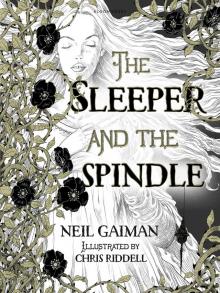 The Sleeper and the Spindle
The Sleeper and the Spindle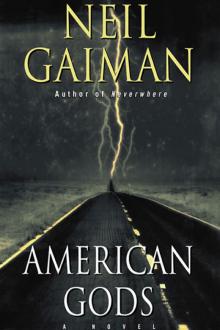 American Gods
American Gods Coraline
Coraline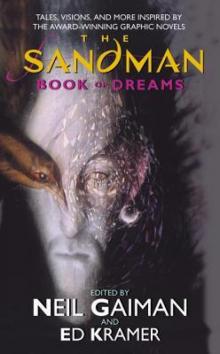 The Sandman: Book of Dreams
The Sandman: Book of Dreams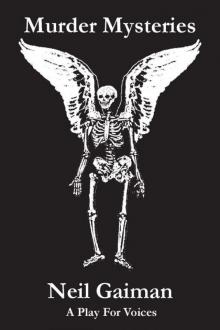 Murder Mysteries
Murder Mysteries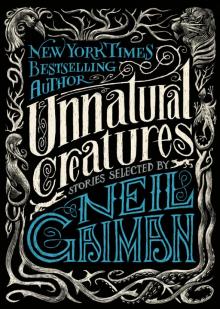 Unnatural Creatures
Unnatural Creatures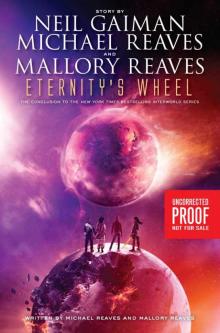 Eternity's Wheel
Eternity's Wheel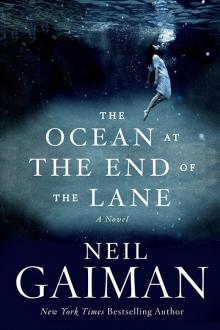 The Ocean at the End of the Lane
The Ocean at the End of the Lane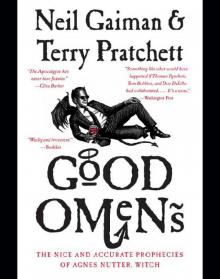 Good Omens
Good Omens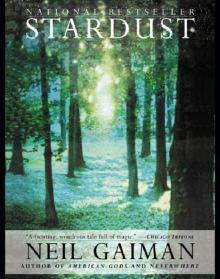 Stardust
Stardust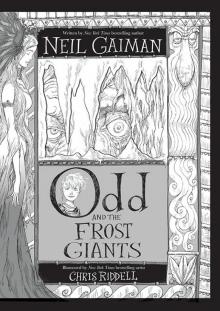 Odd and the Frost Giants
Odd and the Frost Giants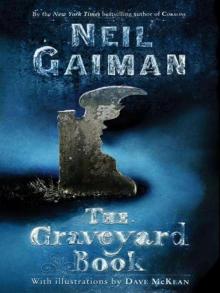 The Graveyard Book
The Graveyard Book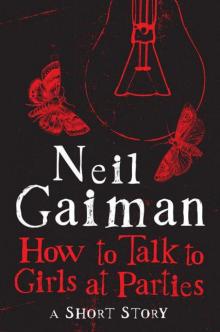 How to Talk to Girls at Parties
How to Talk to Girls at Parties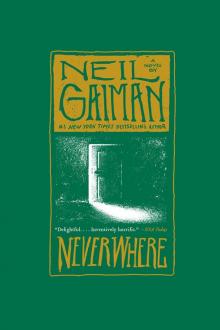 Neverwhere
Neverwhere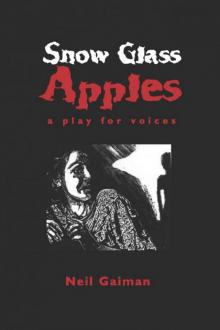 Snow, Glass, Apples
Snow, Glass, Apples Anansi Boys
Anansi Boys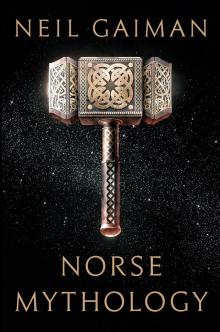 Norse Mythology
Norse Mythology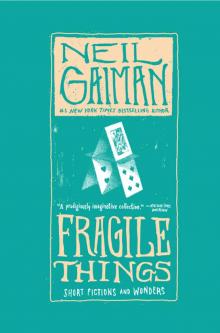 Fragile Things: Short Fictions and Wonders
Fragile Things: Short Fictions and Wonders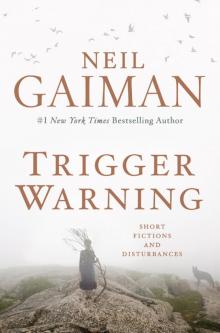 Trigger Warning: Short Fictions and Disturbances
Trigger Warning: Short Fictions and Disturbances InterWorld
InterWorld The Monarch of the Glen
The Monarch of the Glen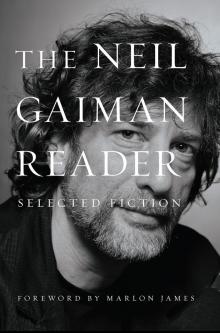 The Neil Gaiman Reader
The Neil Gaiman Reader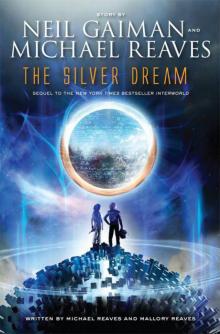 The Silver Dream
The Silver Dream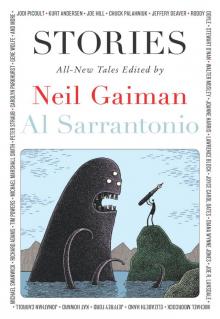 Stories
Stories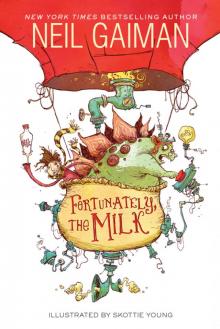 Fortunately, the Milk
Fortunately, the Milk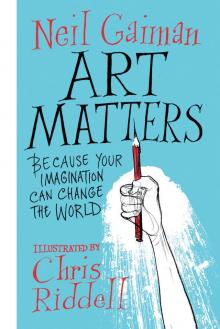 Art Matters
Art Matters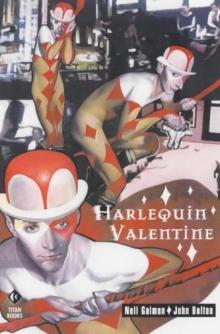 Harlequin Valentine
Harlequin Valentine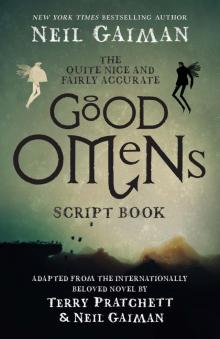 The Quite Nice and Fairly Accurate Good Omens Script Book
The Quite Nice and Fairly Accurate Good Omens Script Book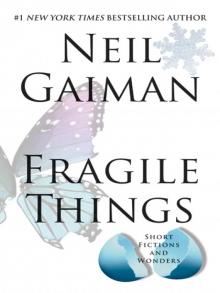 Fragile Things
Fragile Things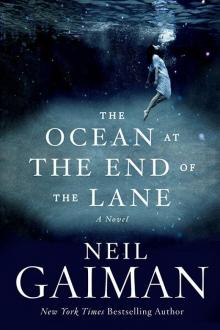 The Ocean at the End of the Lane: A Novel
The Ocean at the End of the Lane: A Novel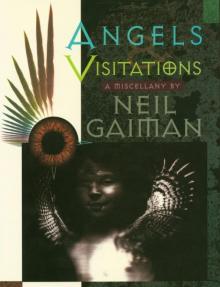 Angels and Visitations
Angels and Visitations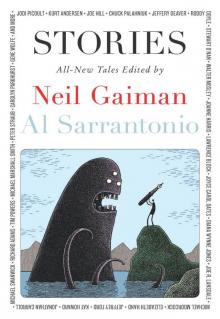 Stories: All-New Tales ngss-1
Stories: All-New Tales ngss-1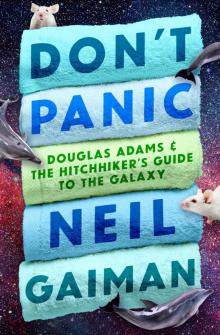 Don't Panic
Don't Panic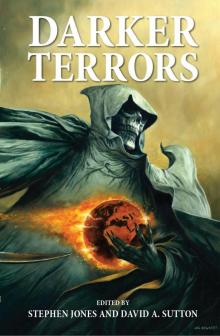 Darker Terrors
Darker Terrors Neil Gaiman Young Readers' Collection
Neil Gaiman Young Readers' Collection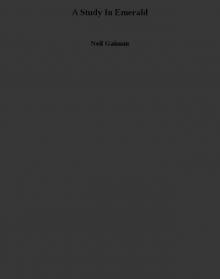 A Study In Emerald
A Study In Emerald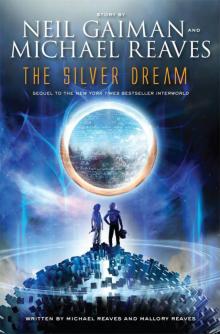 The Silver Dream: An InterWorld Novel
The Silver Dream: An InterWorld Novel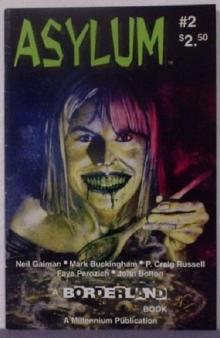 Feeders and Eaters
Feeders and Eaters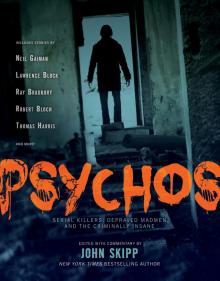 Psychos
Psychos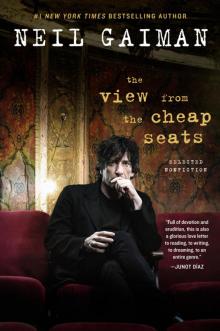 The View from the Cheap Seats
The View from the Cheap Seats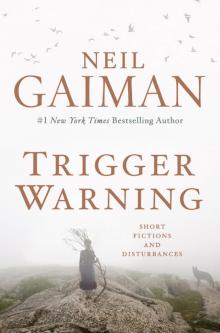 Trigger Warning
Trigger Warning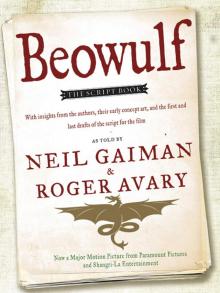 Beowulf
Beowulf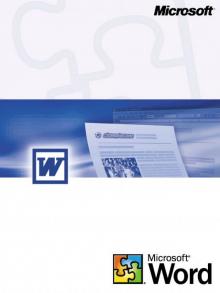 Nessun Dove
Nessun Dove Doctor Who: Nothing O'Clock: Eleventh Doctor: 50th Anniversary
Doctor Who: Nothing O'Clock: Eleventh Doctor: 50th Anniversary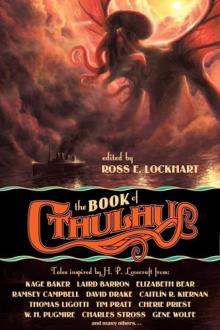 The Book of Cthulhu
The Book of Cthulhu